In this post I share what I’ve learnt about saddle comfort.
I’ve been cycling since I was a kid as a way to stay fit or get about locally. It is only in the last year that I’ve been riding regularly for several hours at a time or even days on end. My biggest single challenge with any of this has been dealing with saddle discomfort.
The cycling industry doesn’t like to put newcomers off by dwelling on this but it can take months to fully acclimatise your sit bones to the demands of sitting upon a bike saddle for hours on end.
As a new cyclist you have to begin slowly in order to accustom your bum to the saddle experience; no matter what brand or design of saddle. Just complete very short rides on alternate days to begin with, there are no shortcuts, it simply takes time for your tissues to develop and adjust to this new demand.
A gradual process is fine for acclimatising your sit bones but if you’re also experiencing numbness and tingling in your soft tissues then something else needs to be done as you can never acclimatise to that. Such tingling or numbness can lead to longterm issues and needs to be taken seriously. (One long five day endurance trip I took lead to months of discomfort but fortunately no lasting issues.)
Some things I’ve learnt..
- Tilting a saddle down to reduce perineal pressure tends to place more weight onto your hands as you stop yourself sliding forward. This can lead to nerve pressure resulting in numb fingers or cyclist’s palsy.
- Saddle width needs to be matched to sit bone width. Wide (130mm+) sit bones on a narrow saddle particularly cause soft tissue pressure.
- A professional bike fit is money very well spent. I had an in depth hour long fit and follow up fit with Kernow Physio that included video analysis and physiological measurements to get an optimum starting position. A follow up session some months later further refined this. The whole process gave me an understanding of the dynamics my bike position, ideas on how I can improve aspects of my strength and flexibility as well as insight into how I can make further micro adjustments if necessary. Get a professional bike fit, no online article or video is any kind of substitute. Scott at Kernow Physio say this about the importance of also combining physiotherapy assessment with a bike fit. “…Full Physiotherapy assessment: This is a key asset to Kernow Physio as one of the most important aspects of a bike fit is understanding how the client moves. And experienced Physiotherapy knowledge certainly helps this. Kernow Physio is one of the few bike fitting companies to be run by a fully chartered Physiotherapist. Key assessment areas include flexibility, true leg length discrepancy, restriction of hip, knee and ankle movement, and a footbed assessment if required.” It worked for me.
- Even just a few millimetres of adjustment (of many different components) can make a significant difference.
- What feels comfortable for 4 hours may not prove so comfortable on much longer rides.
- Good core strength stabilises the pelvis and back which aids comfort. It’s necessary to cross train and combine other exercises beyond cycling to support longterm cycling comfort and endurance. With strong, flat abdominal muscles your pelvis tilts forward less and reduces perineal soft tissue pressure.
- There is no one size fits all solution. Seek the best advice but also trust your judgement; only you really know what is right for you. Very few experts in bike fit or coaching actually have much experience with unsupported ultra distance cycling.
Saddles I’ve tried – in order
Selle SMP Extra
Used on my previous bike. I had high hopes for this but try as I may I couldn’t get a comfortable position with it.
Stock Genesis saddle
This came with my Datum bike but didn’t work well for me.
Brooks Cambium C15 Imperial
I so wanted this saddle to work for me. I love how it looks and initially it did seem very comfortable but after over 1000+km of testing I had to give up on it. It was Ok when riding up on the hoods but in the drops or on TT bars my nether regions went to sleep (I think the non cutout version maybe better as it should result in less sagging in the middle)
Ergon SRS-M
This at first seemed like the solution to my problems but again I couldn’t get a fit that allowed for comfort and blood flow in an aero position using the drops or TT bars without tilting the saddle nose down. Any nose down saddle position had me putting too much weight on my hands to stop me sliding forward. This then lead to nerve constriction and numbness and tingling in my fingers.
Selle SLR
This is the saddle endurance cycling supremo Kristof Allegaert uses and having watched him cross Australia on one during the IPWR I thought it was worth a try. Once again I had the same issue of needing excessive downward saddle tilt to maintain blood flow in more aggressive riding positions which lead to excess hand pressure.
Infinity Seat N series
Aside from perineal pressure there is also the issue of saddle sores where your sit bones make contact. I haven’t suffered particularly badly with this but it’s something I’d idealy avoid. I read many glowing reviews about the comfort of this saddle and it’s design intrigued me. Sadly, my sit bone width at circa 130mm resulted in my sit bones resting, very uncomfortably, exactly on the edges of the cutout rather than within it. I could also tell that even if this wasn’t the case that I was still going to have perineal pressure issues. Another one for eBay and a real shame that http://infinitybikeseat.com don’t provide better pre-purchase sizing guidance.
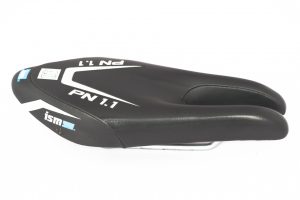 ISM PN 1.1
ISM PN 1.1
Success! This is the saddle I rode the 2017 TAW race on with virtually no blood flow or nerve issues and only mild saddle sores. I find I can move around a lot on this, but still stay comfortable, depending on whether I’m on the hoods, drops or TT bars. The pressure on my pubic rami bones took a few weeks to get used to but then I was set. It’s not quite perfect but certainly the best I’d found until I upgraded to the new PN 3.0.
ISM PN 3.0
This is a seriously good saddle for my needs. Virtually zero blood flow issues riding in any position. Compared with the PN 1.1, the wider back offers more pelvic support and allows me to sit back onto my sit bones if I want. The slightly different to curve to the top of the saddle fits my anatomy better. Small changes compared with the PN 1.1 have resulted in even better comfort. There maybe more comfortable saddles to be had but I’m content with this and no longer looking elsewhere. My focus now is on managing friction and eliminating saddle sores. Check out ISM’s design theory here.
Thanks for reading, I hope you’ve found this useful and wish you happy, comfy riding.
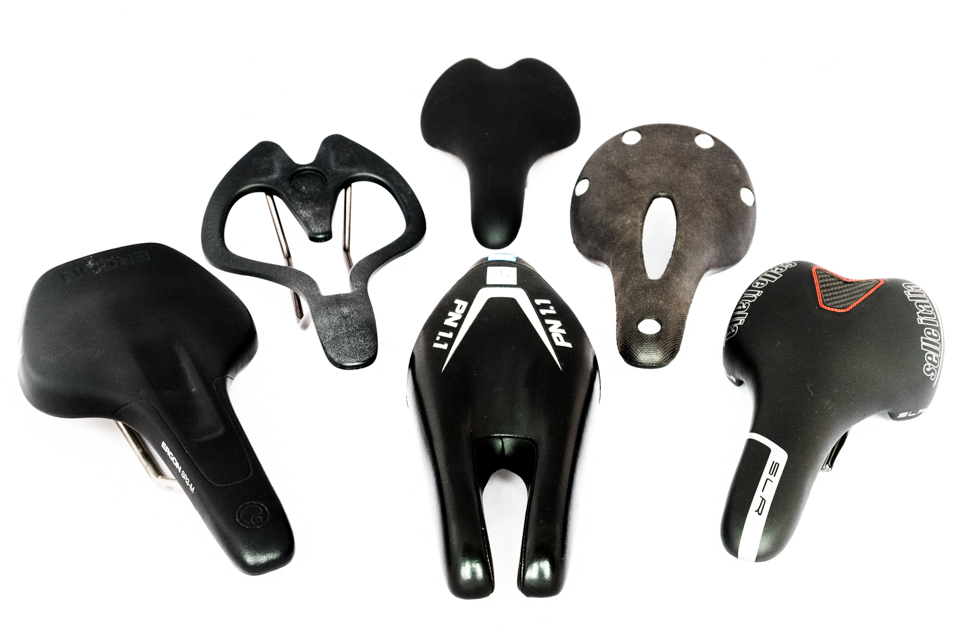

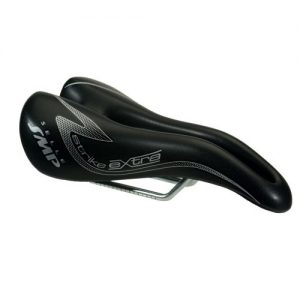
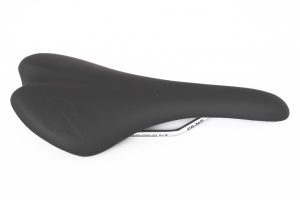
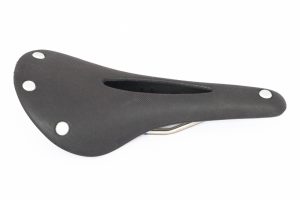
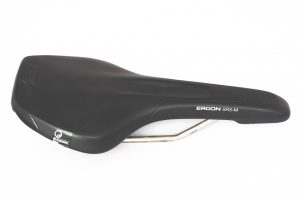
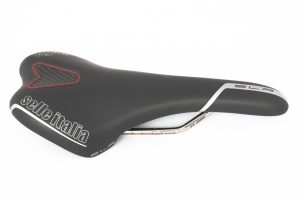
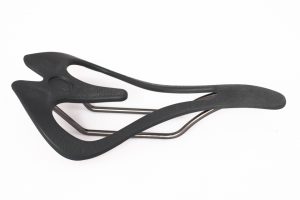
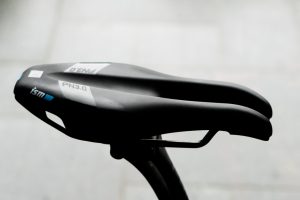
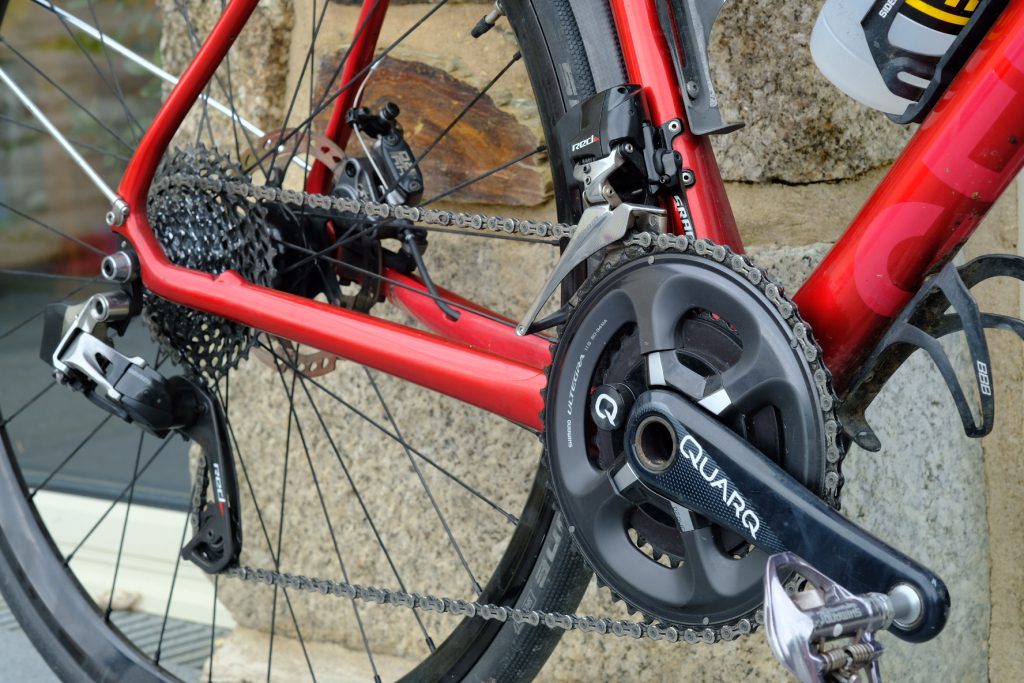
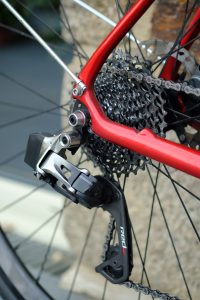 Sram eTap and gear ratios
Sram eTap and gear ratios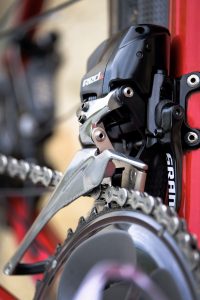
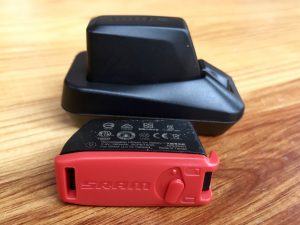
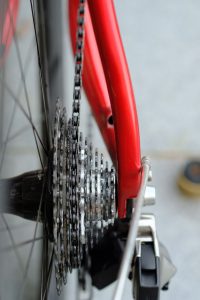 Gear Ratios
Gear Ratios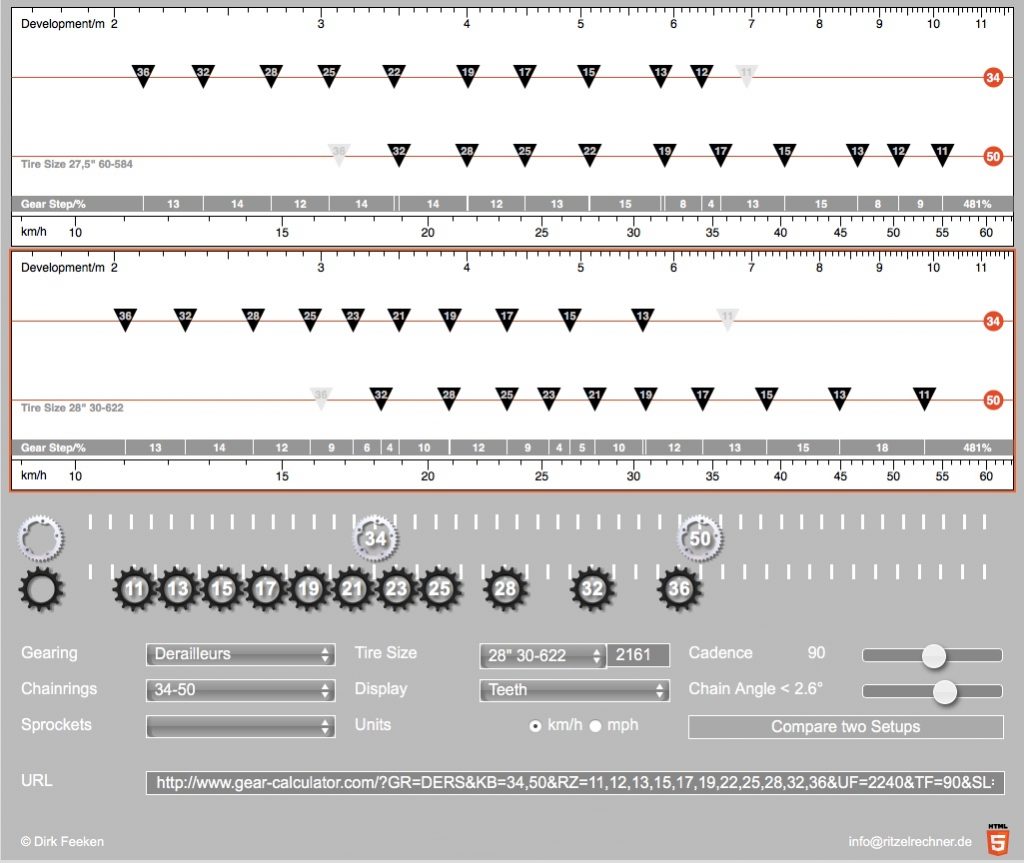
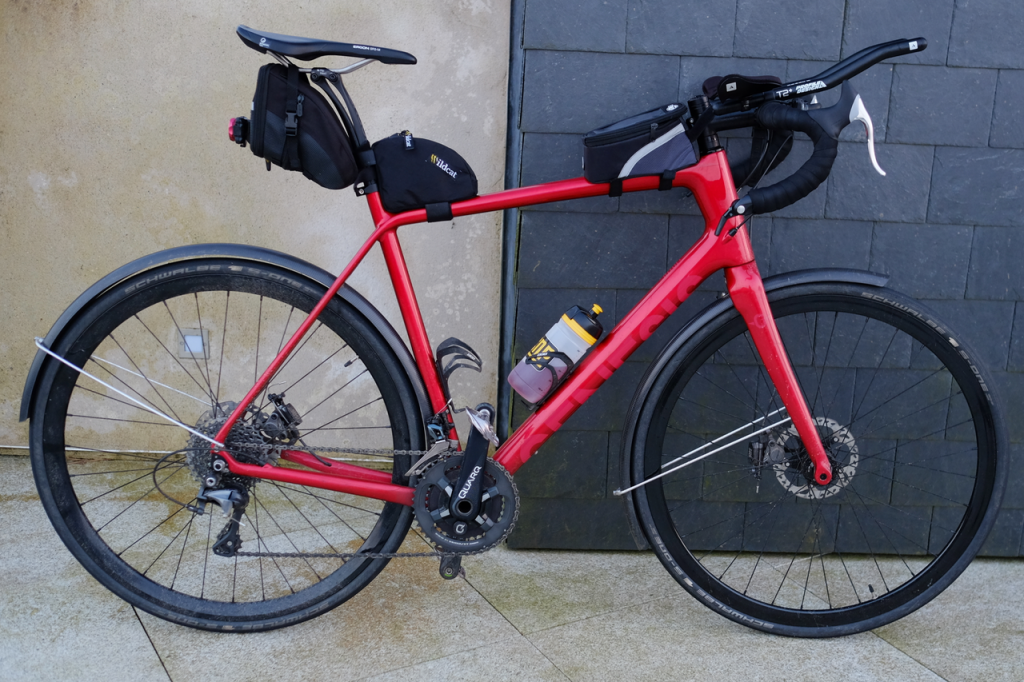
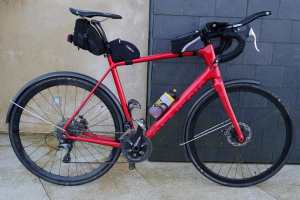 A Genesis Datum 2016 “10” edition. The version with the lowest equipment specification (There’s 10, 20 & 30, all with the same frame but different drivetrain and paint jobs). I rode this pretty much in it’s stock Shimano Tiagra setup from September till January other than changing the tyres after a few weeks and installing a Quarq Dfour power meter to aid training.
A Genesis Datum 2016 “10” edition. The version with the lowest equipment specification (There’s 10, 20 & 30, all with the same frame but different drivetrain and paint jobs). I rode this pretty much in it’s stock Shimano Tiagra setup from September till January other than changing the tyres after a few weeks and installing a Quarq Dfour power meter to aid training.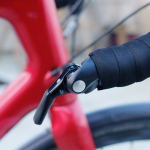 I’ve also had issues with finger numbness on longer rides and bar end shifters force you to move your hands around the bars more which helps with blood flow and reducing nerve pressure. I cut 25mm off the handlebar ends before fitting the shifters so that they didn’t stick out to far and get in the way when riding out of the saddle. I also double wrapped the bars for more comfort using the original wrap with Sram cork tape on top. I am very happy with the result and adjusted to using them immediately. Perfect for long rides with little to malfunction.
I’ve also had issues with finger numbness on longer rides and bar end shifters force you to move your hands around the bars more which helps with blood flow and reducing nerve pressure. I cut 25mm off the handlebar ends before fitting the shifters so that they didn’t stick out to far and get in the way when riding out of the saddle. I also double wrapped the bars for more comfort using the original wrap with Sram cork tape on top. I am very happy with the result and adjusted to using them immediately. Perfect for long rides with little to malfunction.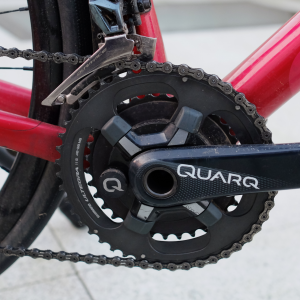 The smaller 46T big ring means I spend most of my time using just that and only drop to the 34T on the steepest hills. When it was 50t I very rarely used the smaller sprockets. (UPDATE: I’ve changed back to a 50:34 setup because shifting works better and I’ve gotten stronger)
The smaller 46T big ring means I spend most of my time using just that and only drop to the 34T on the steepest hills. When it was 50t I very rarely used the smaller sprockets. (UPDATE: I’ve changed back to a 50:34 setup because shifting works better and I’ve gotten stronger)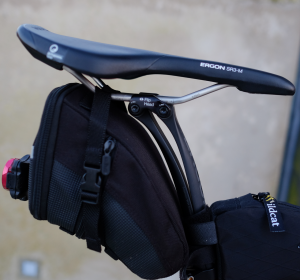 It really does achieve all of that. The only downside, aside from cost, is that altering saddle angle is a longwinded process once it’s installed as the post has to be removed for angle adjustments It’s best get everything spot on and measured with your existing setup and then transfer that across whilst also making allowances for how the saddle moves aft and levels out with your weight on it.
It really does achieve all of that. The only downside, aside from cost, is that altering saddle angle is a longwinded process once it’s installed as the post has to be removed for angle adjustments It’s best get everything spot on and measured with your existing setup and then transfer that across whilst also making allowances for how the saddle moves aft and levels out with your weight on it.